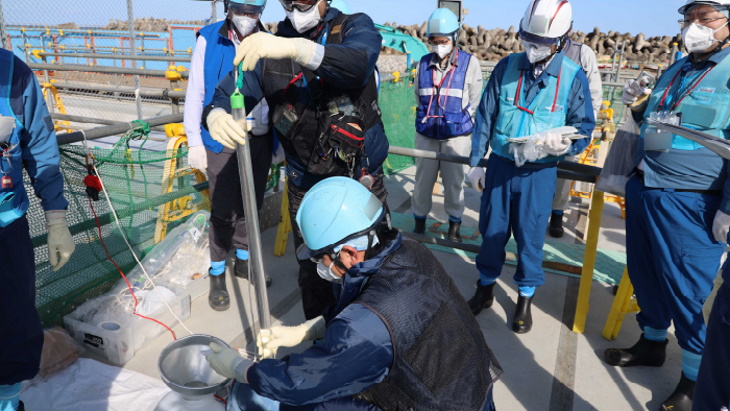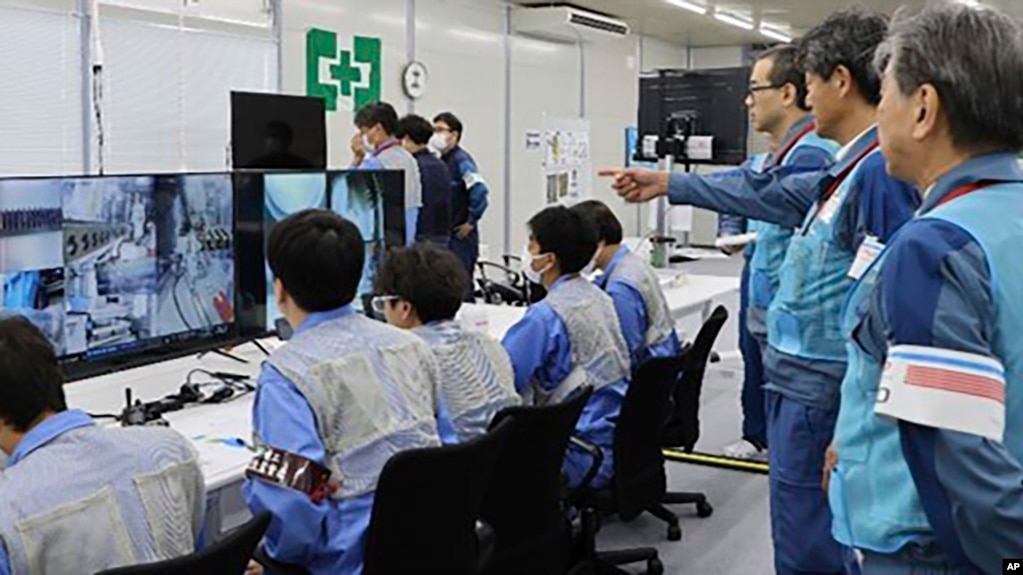By Boyko Nikolov On Sep 23, 2024
The Russian Ministry of Emergency Situations has revealed that its diving specialists are currently inspecting the K-27 nuclear submarine, which sank in the Kara Sea over four decades ago. The announcement came through its official Telegram channel, stating that the submarine, found in Stepovoy Bay, is classified as a radiation-hazardous facility. The K-27, a notorious relic from the era of the Soviet Union, has long been a concern due to the radiation threat it poses to the surrounding environment.

Soviet Tu-143 UAV transformed into a cruise missile in Mideast
Germany considers anti-sub capabilities for its F125 frigates
The Ministry highlighted that the divers will dedicate the next month to evaluating the condition of the K-27, braving the extreme cold both in the air and water of the region. These inspections are part of Russia’s broader initiative to monitor and mitigate potential threats from its aging fleet of nuclear-powered vessels.
Meanwhile, in Kaliningrad, emergency teams have been scrutinizing the hull of a World War II shipwreck near the Pioneer Resort. This particular wreck has also been deemed a potential safety risk due to its closeness to a popular recreational spot. Although no explosives were found, the successful removal of other hazardous elements underscored the Ministry’s ongoing efforts to secure underwater wrecks across Russia.

In the past five years, the Ministry’s diving units have removed nearly 126,000 explosive objects from various underwater locations, highlighting the enduring danger associated with submerged military vessels.
The K-27 stands out in naval history for its groundbreaking role. Launched in 1963, it was a unique Soviet experiment designed to test new nuclear technology, making it the sole submarine of the Project 645 class. Modeled on the November-class [Project 627 Kit], it featured two VT-1 lead-bismuth liquid-metal-cooled reactors—smaller and more powerful than the more common pressurized water reactors but notoriously complex to operate.
Known as the “Zolotaya Rybka” [Little Golden Fish] for its high costs and crew luxuries, the K-27 represented the pinnacle of Soviet naval technology. Its elite crew enjoyed rare perks for the time, such as citrus fruits like lemons and oranges, which were uncommon for most Soviet citizens.

The submarine was also famous for its safety features, with reactors explicitly designed to prevent the malfunctions seen in other Soviet submarines. To prove this, Captain Pavel Leonov famously sat atop one of the reactors, reassuring the crew, who were otherwise reluctant to enter the reactor compartment.
Despite its innovative design, the K-27 struggled with radiation issues from the beginning. Crew members initially detected radioactive particles on board, although these early warnings were largely disregarded.
The defining moment in the K-27’s operational saga occurred on May 24, 1968, when a significant reactor malfunction changed everything. The power output of the VT-1 reactor suddenly plunged from 87% to a mere 7%, and an alarming surge of gamma radiation flooded the reactor compartment.
Vyacheslav Mazurenko, a 22-year-old warrant officer at the time, later recalled the chilling instant they realized the gravity of their predicament: “We had a radiation detector, but it was turned off. When our radiation supervisor switched it on, it went off the scale.”
Tragically, the crew did not comprehend the full extent of the reactor failure until it was too late. By the time they managed to surface the submarine and return to their base at Gremikha on Russia’s Kola Peninsula, all 144 crew members had been exposed to radiation. Sadly, nine of them succumbed to radiation poisoning in the months that followed. The K-27 was permanently taken out of active service in June 1968 and eventually decommissioned in 1979.
In 1982, the K-27 was towed to the Arctic Novaya Zemlya nuclear testing range and deliberately sunk in the Kara Sea at a depth of 33 meters [108 feet]. Soviet authorities filled the submarine with asphalt to seal its fuel-filled reactors and drilled a hole in its aft ballast tank to ensure it would remain submerged.
However, this fix was always intended to be a stopgap measure. Experts caution that the sealant around the reactors is slated to last only until 2032. After this period, there’s a genuine concern about potential radiation leakage. Even more alarming is the possibility that the highly enriched uranium in the K-27’s reactors could spark an uncontrolled nuclear chain reaction under certain conditions, posing a significant threat to the Arctic environment.
In recent years, Moscow has voiced growing concerns about the environmental hazards posed by the K-27 and other submerged Soviet submarines, such as the K-159. Combined, these vessels contain approximately one million curies of radiation. To put that into perspective, it’s about a quarter of the radiation released in the first month of the Fukushima disaster in 2011. Efforts to retrieve the K-27 and the K-159 are part of a wider plan aimed at reclaiming nuclear waste dumped in the Barents and Kara Seas during the Soviet era.
Raising the K-27 is no simple task. It’s a complex and expensive endeavor, with costs expected to exceed 300 million euros [$326 million]. European entities like the European Bank for Reconstruction and Development [EBRD] and Norway had initially shown interest in supporting these projects. However, geopolitical tensions—further strained by Russia’s invasion of Ukraine—have led international partners to withdraw from the initiative. Consequently, the challenge now falls squarely on Moscow’s shoulders.
Despite its efforts, Russia currently lacks the necessary technology to safely recover the K-27. Back in 2001, a Dutch vessel achieved the recovery of the Kursk submarine. However, given current international relations, the Netherlands or other European nations are unlikely to assist Russia with the K-27 operation.
The deteriorating condition of the K-27 submarine presents a significant threat to the fragile Arctic ecosystem. With continued corrosion, the risks of radiation leaks will escalate. Thomas Nilsen, editor of the Independent Barents Observer, has warned, “Radiation leakages will come sooner or later if we just leave the K-27 there. The sub has already been on the seafloor for 30 years, and it was rusty even before it was sunk.”
In 2012, experts on radioactive contamination highlighted the critical need for careful handling of the K-27’s reactors during any recovery efforts. Excessive disturbance of the reactors could trigger an uncontrolled nuclear chain reaction, leading to severe radioactive contamination in the Arctic waters.

Russia’s ambitions to address its nuclear legacy in the Arctic are met with significant challenges. Without international cooperation, the likelihood of effectively recovering the K-27 and other nuclear waste remains low. The urgent environmental and safety concerns surrounding the K-27 underscore the pressing need for a global solution to nuclear waste recovery, ensuring the long-term protection of the Arctic and its unique ecosystem.
***
Follow us everywhere and at any time. BulgarianMilitary.com has responsive design and you can open the page from any computer, mobile devices or web browsers. For more up-to-date news, follow our Google News, YouTube, Reddit, LinkedIn, Twitter and Facebook pages. Our standards: Manifesto & ethical principles.









